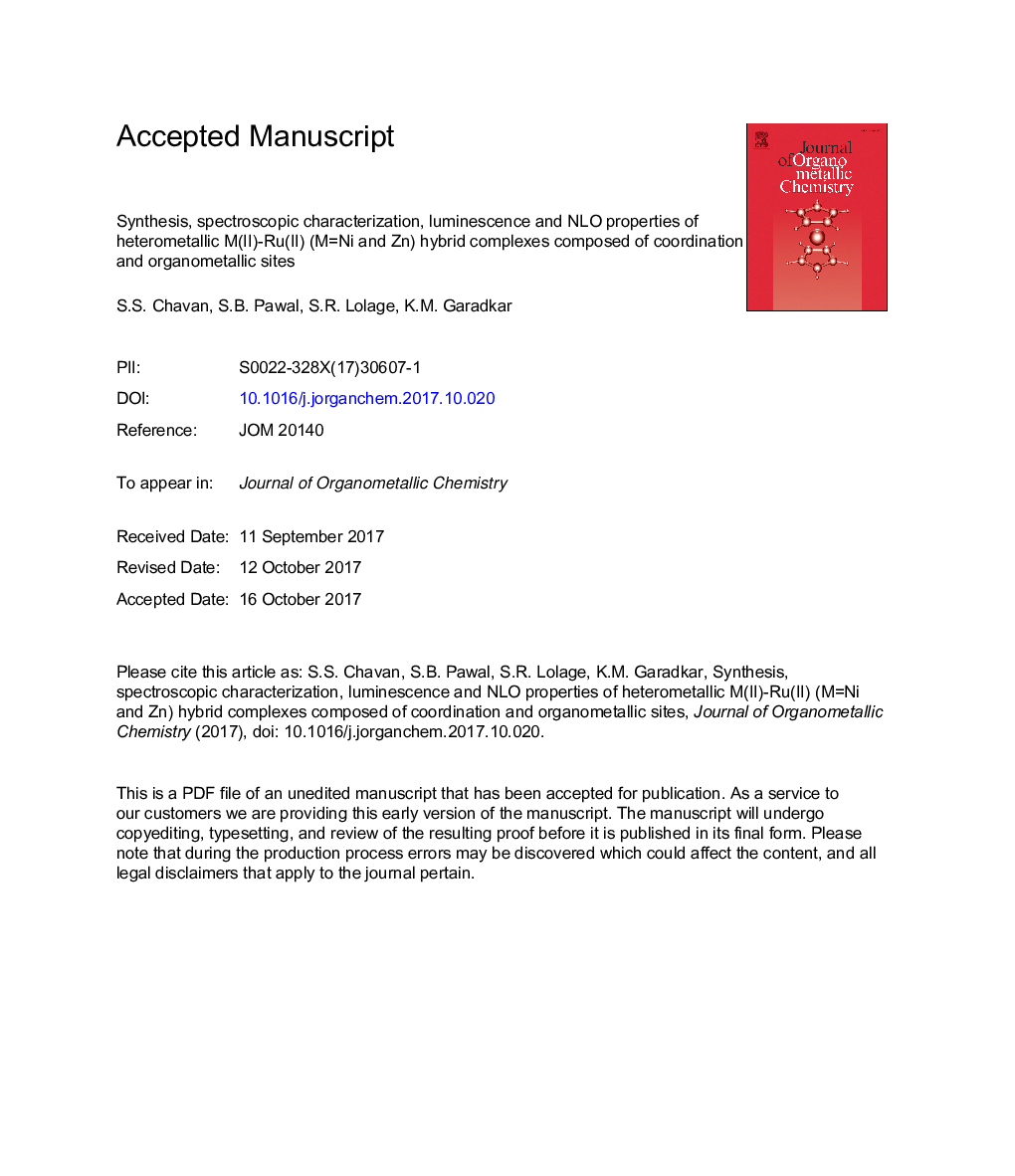| Article ID | Journal | Published Year | Pages | File Type |
|---|---|---|---|---|
| 7756359 | Journal of Organometallic Chemistry | 2017 | 26 Pages |
Abstract
The heterometallic complexes of the type [Ni(L1-3)NC5H4-Câ¡C-C6H3-1,3-{Câ¡C-trans-RuCl(dppe)2}2] (1a-c) and [Zn(L1-3)NC5H4-Câ¡C-C6H3-1,3-{Câ¡C-trans-RuCl(dppe)2}2] (2a-c) (Where, L1 = 2-{(E)-[(2-hydroxyphenyl)imino]methyl}phenol, L2 = 2-{[(E)-(2-hydroxyphenyl) methylideneamino}-5-methoxyphenol and L3 = 2-{[(E)-(2-hydroxyphenyl)methylidene]amino}-5-nitrophenol and dppe = 1,2-bis(diphenylphosphinoethane)) have been prepared and characterized by elemental analysis, FTIR, Uv-Visible, 1H NMR, 31P NMR and mass spectral studies. The thermal stabilities of the complexes 1a-c and 2a-c were studied by thermogravimetric analysis (TGA). Quasireversible redox behaviour is observed for all complexes corresponding to Ru(II)/Ru(III) and Ni(II)/Ni(III) couple for 1a-c and Ru(II)/Ru(III) couple for 2a-c. All the complexes are emissive in solution at room temperature revealing the influence of substituents and solvent polarity on emission properties of the complexes. The second harmonic generation (SHG) efficiency of the complexes was investigated by Kurtz-powder technique demonstrating that all complexes flaunt the second harmonic generation property.
Related Topics
Physical Sciences and Engineering
Chemistry
Inorganic Chemistry
Authors
S.S. Chavan, S.B. Pawal, S.R. Lolage, K.M. Garadkar,
